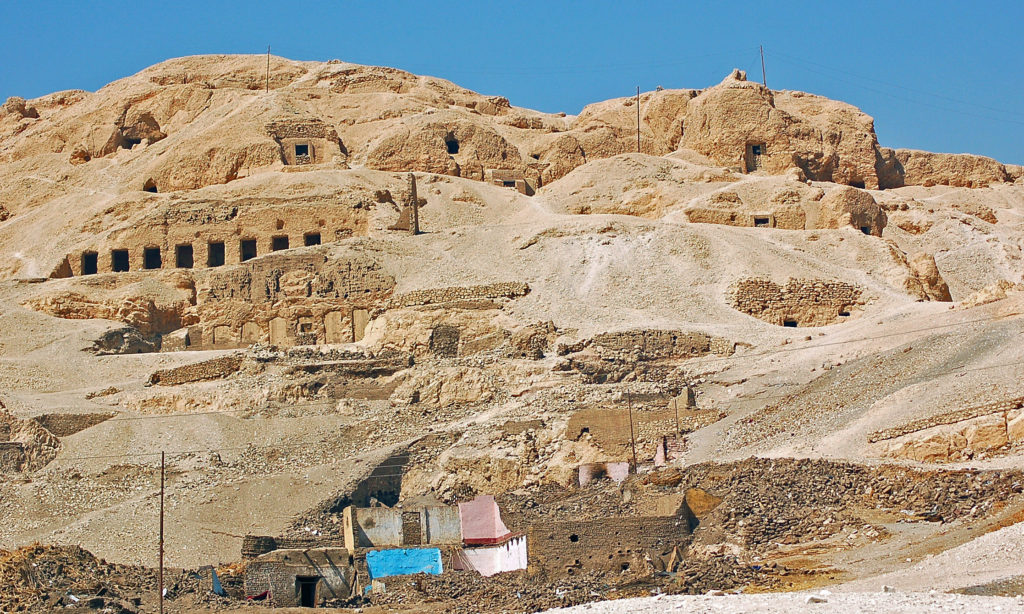
Most visitors to Egypt tour the Valley of the Kings and the Valley of the Queens. Far fewer even know about the Valley of the Nobles, which provides information about the world’s first monotheistic religion.
The Valley of the Nobles lies on the west bank of the Nile near Luxor, the location of the New Kingdom capital known as Thebes. It includes 415 hillside tombs built to hold the mummies of important officials of New Kingdom pharaohs. Paintings on the tomb walls illustrate the lives and times of their occupants. For example, the tomb of Userhet, a scribe for Pharaoh Amenhotep II, shows a barber cutting hair beneath a tree.
Paintings on the walls of Ramose’s large colonnaded tomb reflect the short period of Egyptian monotheism. Ramose began his career as a governor under Pharaoh Amenhotep III, whose name reflected his worship of Amun, then the most important Egyptian god. After Amenhotep III died in about 1350 B.C., Ramose continued working for his son, Pharaoh Amenhotep IV. Ramose’s tomb in the Valley of the Nobles was begun during the early years of Amenhotep IV’s reign, showing Ramose and his pharaoh among the traditional Egyptian gods. A few years into his reign, Amenhotep IV decreed that Aton, the sun disk, was the only god and changed his name to Akhenaten, reflecting his new devotion to Aton. As work continued on Ramose’s tomb, the paintings now showed only Aton. Akhenaten then moved his capital from Thebes to a new city named Akhetaton, 200 miles to the north. As a result, Ramose’s tomb in the Valley of the Nobles was never finished and he was interred in Akhetaton. Akhenaten’s son was originally named Tutankhaten but changed his name to Tutankhamun when, as pharaoh, he rejected his father’s monotheism and returned to the worship of Amun and other traditional gods.